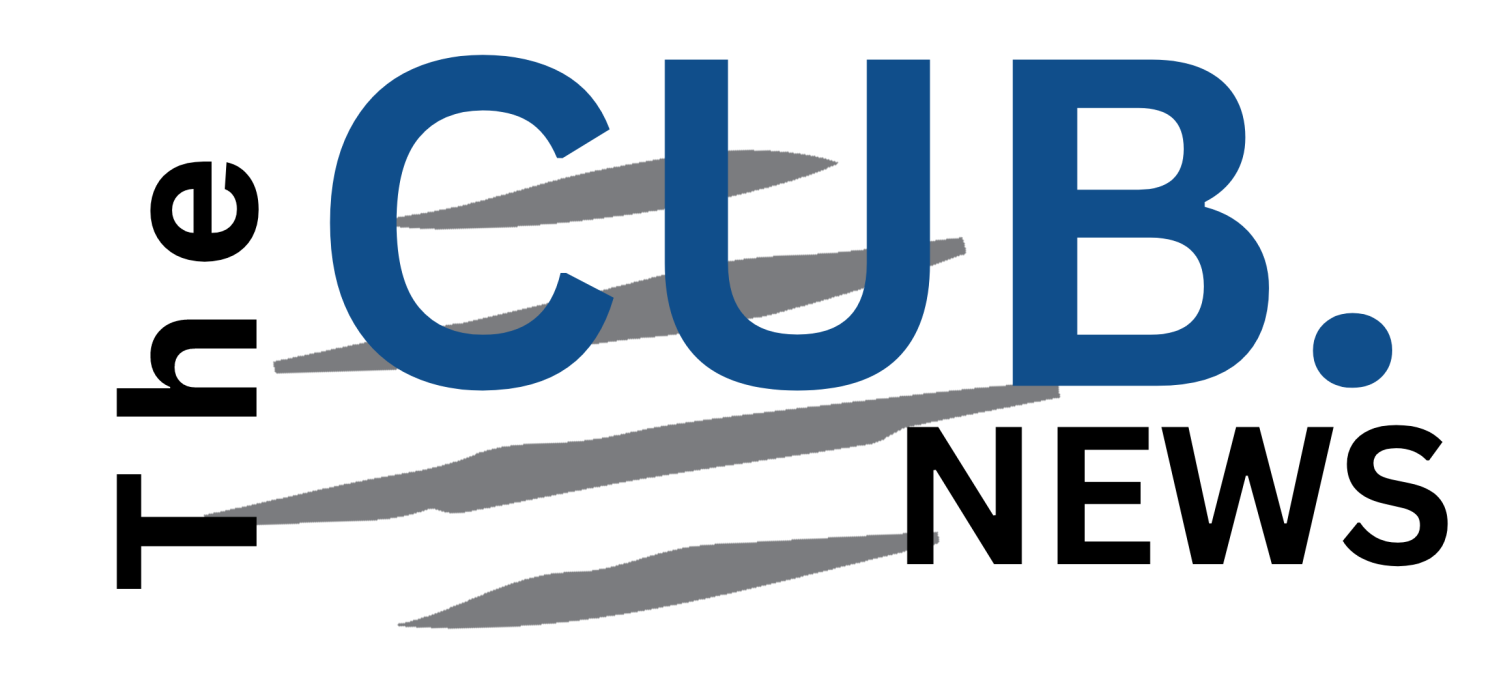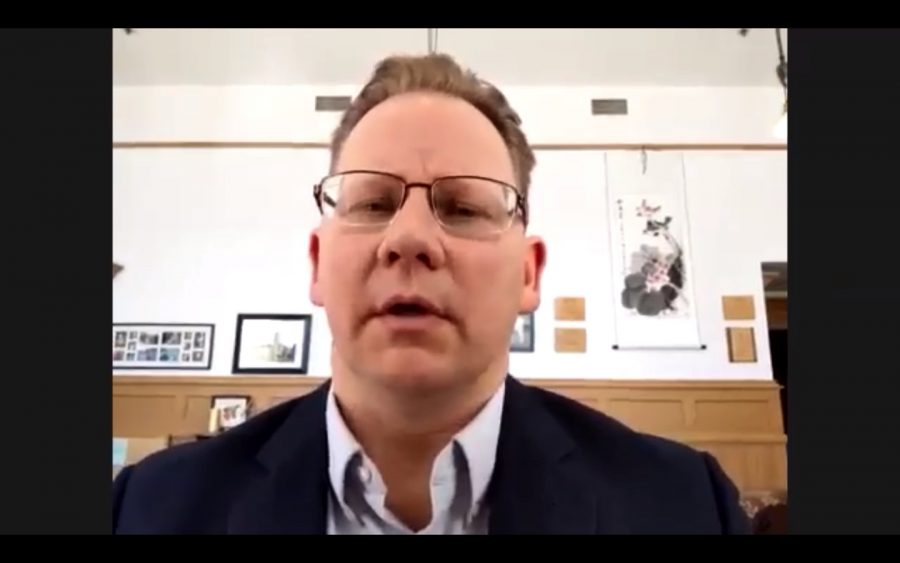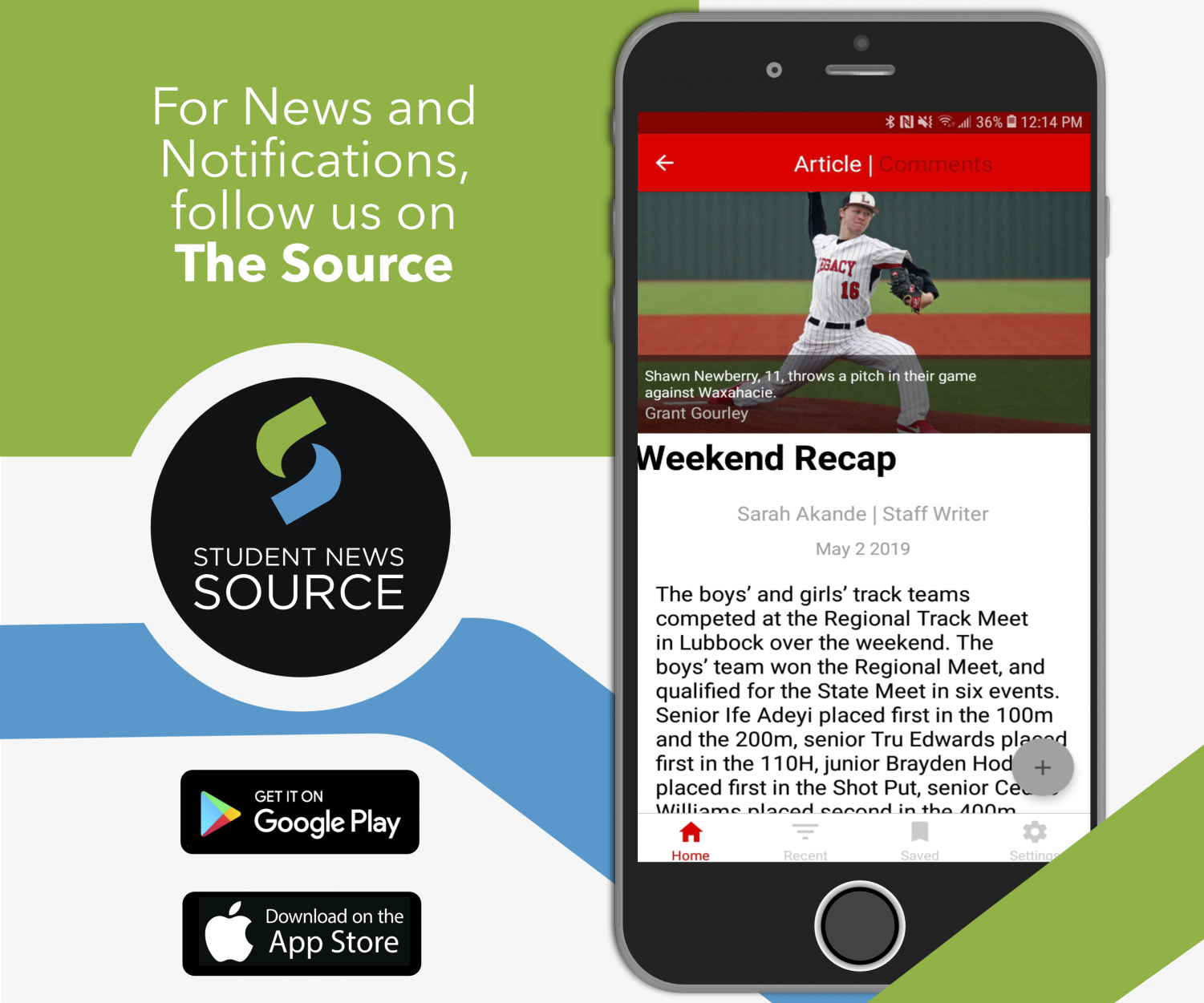Washington State Superintendent of Public Instruction Chris Reykdal Joins Student Journalists to Answer Most Pressing Questions
Screenshot courtesy of Madisun Tobisch
State Superintendent of Public Instruction Chris Reykdal met with 12 Washington student journalists to answer questions via zoom.
May 11, 2020
As many aspects of everyday life are continually altered due to the impact of Covid-19, the state of Washington is preparing for a new approach to education, which could mean a new normal in what the average school day looks like for most students.
With Washington State Governor Jay Inslee’s April 6 declaration that all schools would remain closed for the duration of the school year, many students, families, and educators now question what the future of education in the state will look like when schools do reopen.
In an attempt to answer some of the most pressing questions, the Washington State Journalism Education Association (WJEA) organized a press conference with the state’s Superintendent of Public Instruction Chris Reykdal and twelve student journalists from around the state of Washington via zoom on May 7.
Gov. Inslee’s order will end on June 19, so next steps in the field of education and recreational school activities for the summer and early fall will be determined by his updates. Reykdal anticipates school sports returning, but not without some implemented social distancing.
“At this point I’m hearing a lot of optimism about sports this fall. What I’m not hearing optimism about is packing the stands with family and friends because they would be too close together,” said Reykdal.
Once the Governor updates his ordinance, it will be up to the Department of Health to decide what social distancing measures will be taken.
“The Department of Health and the CDC give us the guidelines, the University of Washington’s virology lab is telling us Washington State’s particular experience with the virus and between those three groups, they tell us what the restrictions are,” said Reykdal.
Future education procedures for Washington will likely be modeled after other states and countries that have already begun amending their school systems for Covid-19 and other future possibilities.
“This task force we’re putting together will create a menu of options for districts on how they might open up this fall. We’ve got a group already looking at what’s happening in other countries and other states,” said Reykdal, who believes in allowing school districts to get creative when it comes time to reopen under new requirements.
“It might be that we have to cut our class sizes in half or that students stay in cohorts so that if there is an infection, the entire cohort can be isolated and not impact other students,” said Reykdal.
As of now, it’s a waiting game. “We don’t see anything in the budgets that are going to allow us to hire a bunch more staff, so we’re all kind of waiting for the Department of Health to say to us, you don’t get to have 30 students in classes next year, it’s 15 or 18, and if that happens that’s going to be a really, really hard thing to plan for,” said Reykdal. “It’s going to mean less instructional hours for most students.”
One suggested option has been the possibility of operating on a block schedule with students showing up on alternating days to meet with their teachers while integrating more online instruction to make up for decreased class time. There will be an emphasis on keeping K-8 students in class as much as possible with limited online work moving forward.
Reykdal also plans to encourage districts to further their professional development across their online learning platforms such as Skyward and Canvas.
“Lately what we’ve been hearing is just too much volume. Too many different teachers using too many different platforms and students and families navigating multiple different platforms to try to engage and connect,” said Reykdal, adding that he will be encouraging districts to have one platform for learning management come fall that the district is focusing on, with professional development for all teachers so that they’re prepared to be successful with it and if possible, professional development and training in online learning for students and parents.
There is more riding on the reopening of schools than just expert opinion. “The health science will guide us and then our planning effort, but then there’s another thing that’s harder to judge – will students and parents want to come back,” said Reykdal.
Reykdal predicts that geography will play a role in how schools across the state will choose to operate once reopened. “The experience in Seattle will be really different than very rural Washington who hasn’t had the same impact.”
The grading model will also likely be changed, Reykdal plans to move more school districts across the state to a more standard based grading scale. “We’re trying to…get down the volume of worksheets and volume of homework and volume of information to really get at whether students know concepts,” said Reykdal. “This has been a really eye opening moment for our state and we’re going to use it as a springboard to dive into standard based grading.”
Under the current statute, grading policies have been left up to the school districts to be determined on a district by district basis. Seattle and Bellingham school districts are offering grades of either A or I (incomplete). Sedro-Woolley School District is operating on a system that gives students either A, B, C, or I.
Reykdal says that despite debate on whether or not an A-I grading system is equitable, grades from this semester will be taken into consideration as the results of a very difficult time.
“For students in the A-I systems, I think there’ll be a little blip for one term for some classes where the GPA looks a little healthier. It’s exactly the reason why higher ed and the business community said ‘can you please put a notation on transcripts for this period of time,’” said Reykdal.
Superintendent Reykdal has hosted a number of Q&As and other informational videos on the Washington Office of Superintendent Instruction (waOSPI) youtube page where families and students can gather more information.




Renae Honcoop • May 13, 2020 at 6:19 PM
How would Sped students get their needs meet next year if we don’t go back to what was normal? It is very hard to meet their needs right now!
David Shusta • May 13, 2020 at 12:17 PM
Wow! Great reporting, Madisun.